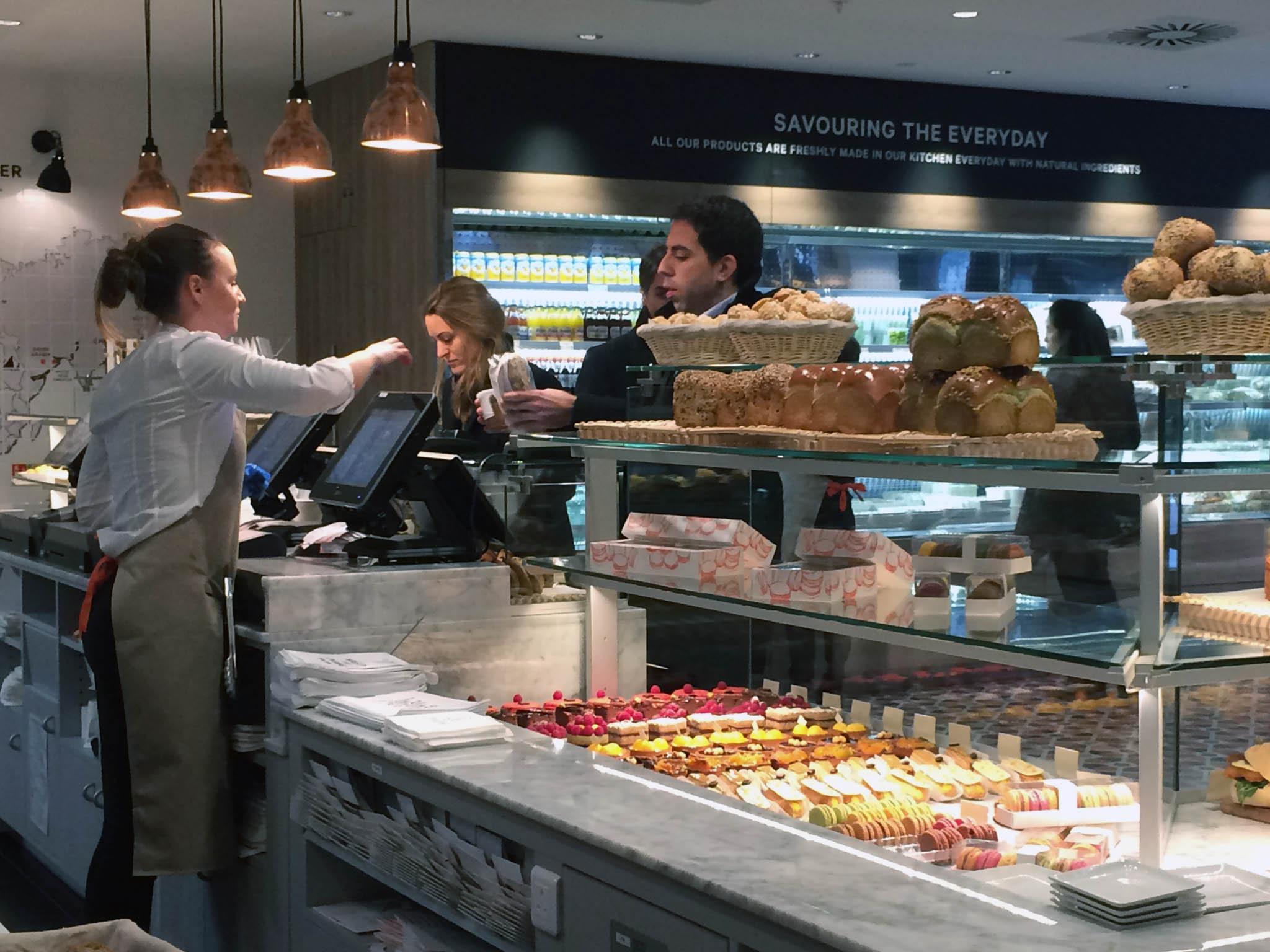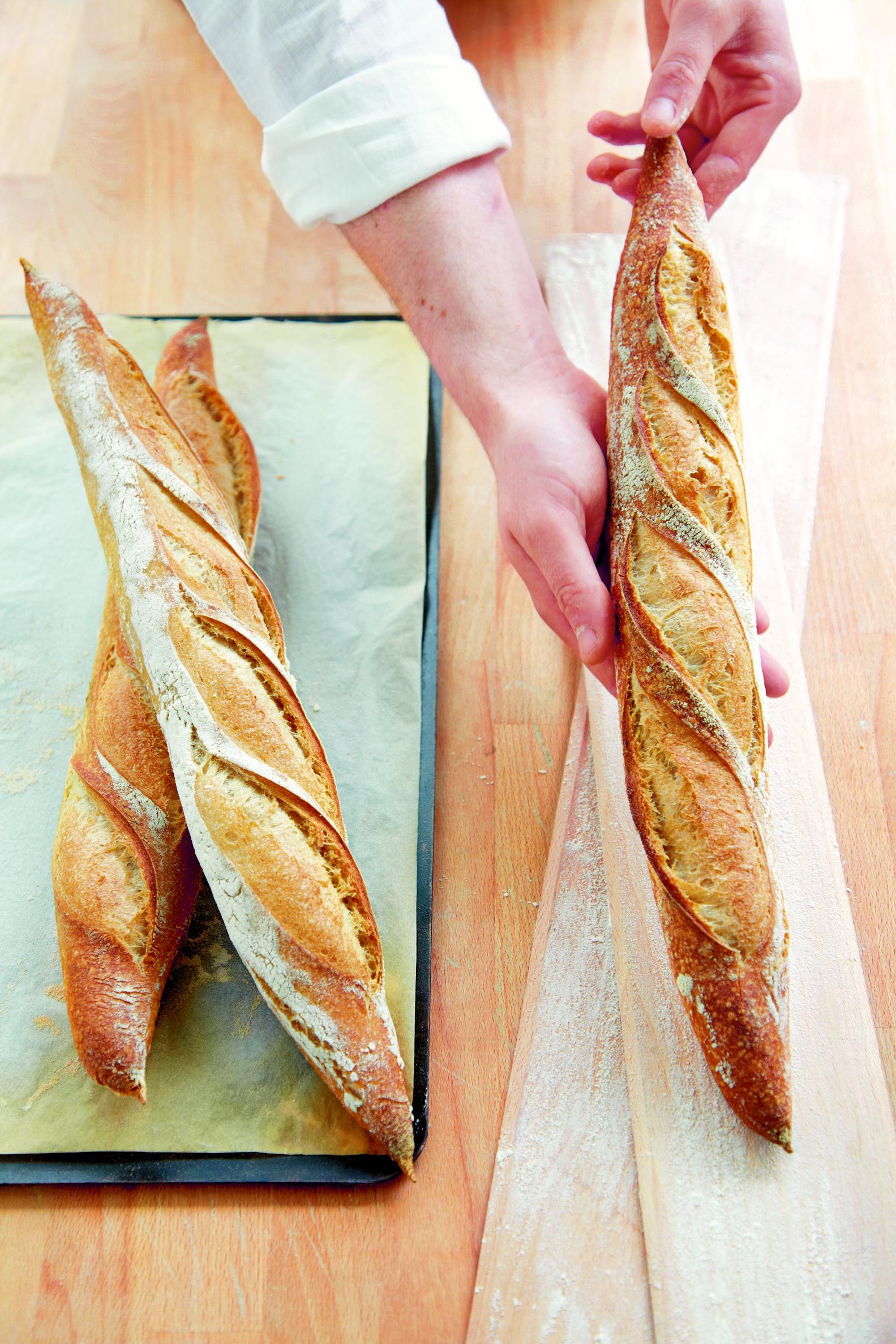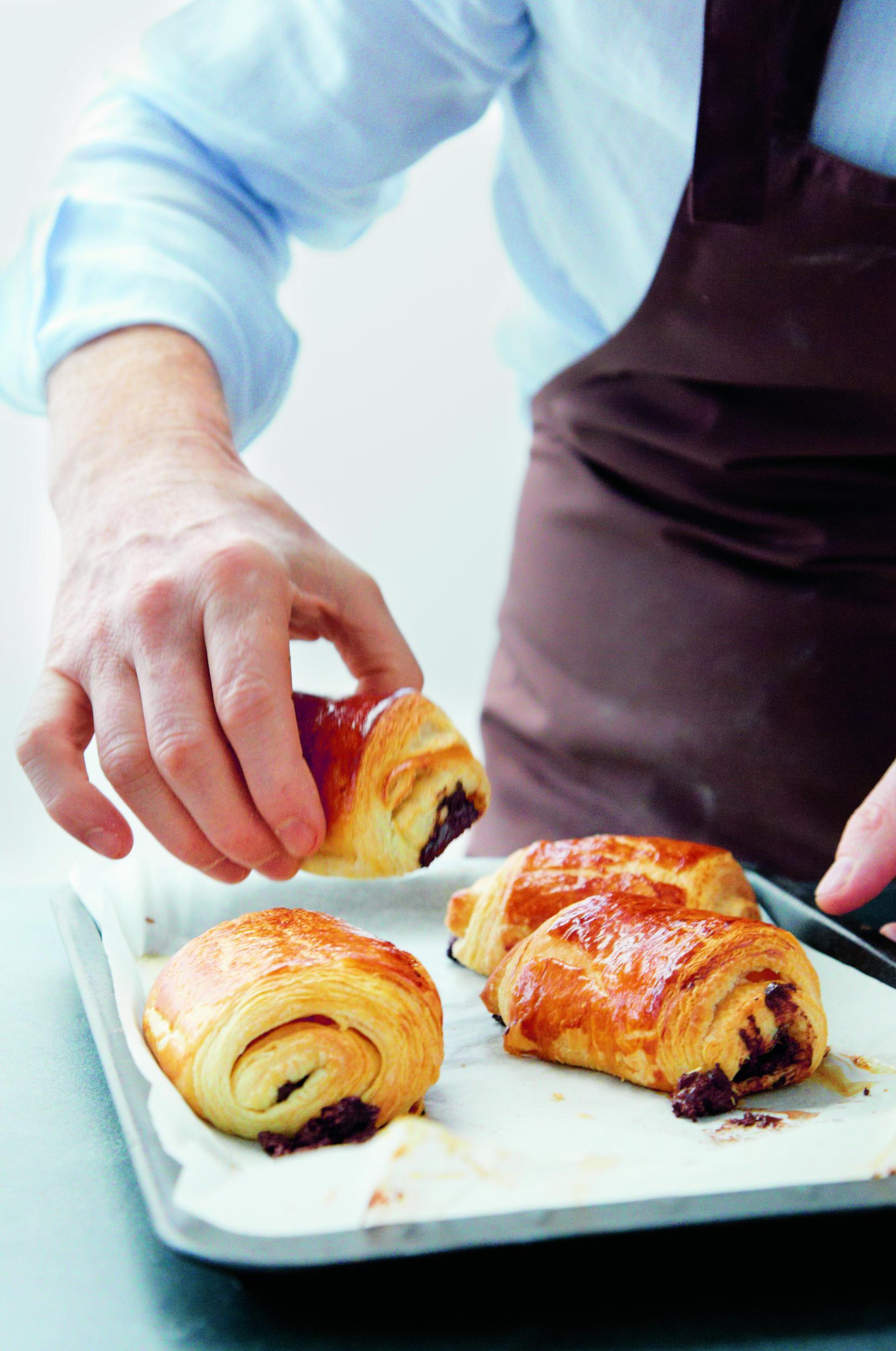Maison Kayser makes its long waited appearance in London
After 20 years, the French favourite Maison Kayser has made its way to the UK. Mica Soellner meets the man behind the bakery and finds out how he opened the London branch himself

Your support helps us to tell the story
From reproductive rights to climate change to Big Tech, The Independent is on the ground when the story is developing. Whether it's investigating the financials of Elon Musk's pro-Trump PAC or producing our latest documentary, 'The A Word', which shines a light on the American women fighting for reproductive rights, we know how important it is to parse out the facts from the messaging.
At such a critical moment in US history, we need reporters on the ground. Your donation allows us to keep sending journalists to speak to both sides of the story.
The Independent is trusted by Americans across the entire political spectrum. And unlike many other quality news outlets, we choose not to lock Americans out of our reporting and analysis with paywalls. We believe quality journalism should be available to everyone, paid for by those who can afford it.
Your support makes all the difference.Parisian Boulanger Eric Kayser once had a dream to spread naturally baked and traditionally made pastry shops all over the world. It’s taken just over 20 years, but the much-loved Maison Kayser bakery has finally made its debut in London on Baker Street. The internationally known French artisan bakery has been declared to have the “world’s best croissants” by French daily Le Figaro and the best baguettes in New York City. With over 180 bakeries around the world, Maison Kayser is ready to open its doors to Londoners to enjoy its cakes, croissants and savoury pastries.
“Every time we open up in a very big city, it takes a lot of time to organise it,” Kayser said. “It costs a lot of money to build a shop like this.”
When starting up previous bakeries, Kayser has relied on partnerships and franchises in order to fund the costs of his business. What makes the opening of Maison Kayser in London unique is that he decided to open it up himself.

“We have opened our first shop in London,” Kayser said. “We need to do a lot of training for our workers and explain to them who we are and what we do and why we have this type of quality.”
Kayser believes that what sets his bakeries apart from others is the quality of the ingredients combined with the energy of the workers. Respecting the changing of seasons, Maison Kayser bakeries use fresh fruits and vegetables when they are best available.
“I think when you bake the dough, you send an energy inside the bread,” Kayser said. “You’ll see all the bakers mixing the bread and people have a lot of patience with the food. If you can teach people that, it would be fantastic. I think the most difficult thing in every country and in London too, is to give our spirit to the worker. Our chef for the pastries and our chef in the kitchen are totally different. The spirit is different and the precision is different.”
With as much international recognition that Maison Kayser has, the bakery has learned to adapt uniquely to each country’s staples. Keeping roughly 80 per cent of the menu the same, Maison Kayser offers 20 per cent of a local variety with green macha flavours available in Japan and specialised porridge available only in Britain. Despite small changes, the appearance of Kayer’s products remain an important concept both home and abroad.

“People buy with their eyes,” Kayser said. “If you don’t have a nice presentation, people don’t want to buy it. But, after, you have to have a good taste. They need to smell and to try it and understand. When people try it, it’s good, they don’t know why. It’s similar to perfume. Our brand is the same but we are going a natural way.”
Though the Maison Kayser on Baker Street has only been open for two weeks, Kayser hopes for a promising future for more bakeries in the UK one day.
“In my dream, I was thinking about times when I wanted to be a baker and travel the world so I’m keeping this story,” Kayser said. “It was in my DNA. When I was 3 or 4 years old, I still remember I wanted to open bakeries in different countries. It was in my brain.”
Maison Kayser is open now on 8 Baker Street, London W1U 3BU
Recipes

Baguette
Makes 3 baguettes
Mixing and kneading: 15 min
First resting: 1h
First rising: 1h 30min
Second resting: 30 min
Proofing: 1h40min
Baking: 20min
500g all-purpose (plain) flour, plus extra for dusting
325g water at 20°c
100g liquid sourdough starter (or 25g dry sourdough starter)
3g fresh baker’s yeast, crumbled
10g salt
Kneading in a stand mixer: Put the flour and water in the bowl and mix for 4 minutes at low speed. Remove the bowl from the machine and cover it with a damp cloth. Leave to rest for 1 hour, then add the starter, fresh yeast, and salt. Knead with the dough hook for 4 minutes at low speed, then for 7 minutes at high speed.
Kneading by hand: Put the flour on a work surface or in a mixing bowl and make a large well in the centre. Pour in two-thirds of the water and mix until all the flour has been incorporated. Leave to rest for one hour under a damp cloth, then incorporate the rest of the water, the starter, fresh yeast, and salt. Knead the dough until it becomes smooth and elastic. Shape into a ball and cover with a damp cloth. Let rise for one hour and 30 minutes. It will have increased in volume by the end of the rising time. Dust the work surface. Divide the dough into three equal pieces. Fold each piece over on itself, pulling gently to stretch into a longish log. Cover with a damp cloth and leave to rest for 30 minutes.
Working with one piece of dough at a time, use the palm of your hand to flatten it gently. With the long side facing you, fold in a third towards the centre and press along the edge with your fingertips. Swivel the dough 180 degrees. Fold in the other long edge so that it overlaps in the centre and press with the heel of your hand. Fold one half on top of the other, and seal the edges together with the heel of your hand.
With lightly floured hands, roll the baguette out to 21 inches (55 cm) long, then pinch each end into a point. Shape the other two baguettes the same way.Carefully lift the baguettes onto a lightly floured baker’s cloth, seams underneath. Separate them by making folds in the cloth. Cover with a damp cloth and leave to proof for one hour and 40 minutes, by which time the baguettes will have increased in volume.
Place a baking sheet on the bottom shelf of the oven and preheat to 230°c. Gently place the baguettes, seam down, on another baking sheet lined with parchment (baking) paper. Dust with flour and make 4 evenly spaced oblique slashes along the length of each baguette. Just before putting the baguettes in the oven, pour 50g of water onto the preheated baking sheet. Bake for 20 minutes. Remove from the oven and leave to cool on a wire rack.

Pain Au Chocolat
Makes 16 rolls
Mixing and kneading: 10 min
Refrigeration: 4 hours
Proofing: 2 hours
Baking: 15 mins
500g all-purpose (plain) flour
220g water at 10°C
50g liquid sourdough starter (or 13 g dry sourdough starter)
20g fresh baker’s yeast, crumbled
10g salt
70g sugar
1 egg, plus 1 lightly beaten egg for glazing
25g softened butter, plus 250 g (generous 1 cup) chilled butter
225g dark chocolate, broken into squares
Kneading in a standing mixer: Put the flour, water, starter, fresh yeast, salt, sugar, and egg in the bowl. Knead for 5 minutes at low speed, then for 5 minutes at high speed. Add the softened butter around 3 minutes before the end of the kneading time.
Kneading by hand: Put the flour on a work surface or in a mixing bowl and make a large well in the centre. Add the starter, fresh yeast, salt, sugar, egg, and the softened butter, then pour in half the water. Mix well, then add the remaining water and blend until all the flour has been incorporated. Knead the dough by throwing it forcefully down onto the work surface and then folding it until it becomes smooth and elastic. Shape the dough into a ball. Cover with a damp cloth and refrigerate for one hour.
Take the chilled butter out of the refrigerator and place it between two sheets of baking paper. Soften by lightly running a rolling pin over it, and gradually shape into a rectangle. Dust the work surface.
Use a rolling pin to roll out the chilled dough to a 12x24- inch (30x60-cm) rectangle, 1⁄8 inch (3 mm) thick. From time to time, lift the dough off the work surface to check its size. Roll out the butter to fit one half of the dough rectangle. Lift the butter onto the dough and fold the other half of the dough over it. Turn the dough 90 degrees, so that the opening is to the right. Roll out the dough again to obtain a 12x36- inch (30x90- cm) rectangle.
Fold this rectangle into thirds, brushing off any excess flour as you go, if necessary. Wrap the dough in plastic wrap (cling film), and make an indentation with your fingertip in one corner to indicate that you have made one turn.
Refrigerate for 1 hour. Dust the work surface and take the dough out of the refrigerator. Roll the dough out to a 12x36- inch (30x90- cm) rectangle and folding it in thirds. Wrap in plastic wrap and make 2 indentations with your fingertips to indicate a second turn. Refrigerate for 1 hour. Repeat this process for a final time. Roll the dough out to a 12x36- inch (30x90-cm) rectangle and folding it in thirds.
Wrap the dough in plastic wrap and make 3 fingertip indentations to indicate a third turn. Refrigerate for 1 hour. Dust the work surface. Unwrap the dough and roll it out neatly to a 16x24 inches (40x60cm) rectangle, 1⁄8 inch (3 mm) thick. Try to make it as straight and even as you can, trimming the edges to neaten, if need be. Fold the dough in half lengthwise, then unfold it and cut it in 2 along the length of the fold.
rrange squares of chocolate along the long edge of each piece of dough. Use a large knife to cut each piece of dough into rectangles, using 3 squares of chocolate as a guide for the width. Make sure that each rectangle is slightly wider than the chocolate so it doesn’t protrude from the ends when you roll it up. You should achieve a total of 16 rectangles, each about 6 by 4 inches (15 x 10 cm).
Roll up each pain au chocolat, making about 3 turns. The seam should ultimately rest underneath so that it does not unfold during baking. Throughout this process the dough pieces should remain well chilled; otherwise, it will be impossible to roll them. If they soften too much, return them to the refrigerator.
Arrange the pains au chocolat on baking sheets lined with parchment (baking) paper. Leave to proof for 2 hours. (You could place the sheets in a cold oven, which then becomes a proofing chamber. Remove them before preheating the oven.) Place another baking sheet on the bottom shelf of the oven and preheat to 325°f (170°c). Glaze the pains au chocolat with lightly beaten egg. Just before putting them in the oven, pour 50 g (scant ¼ cup) of water onto the preheated baking sheet. Bake for 15 minutes. Remove from the oven and leave to cool on a wire rack.
Recipes from The Larousse Book of Bread by Eric Kayser. Phaidon, £24.95
Join our commenting forum
Join thought-provoking conversations, follow other Independent readers and see their replies
Comments